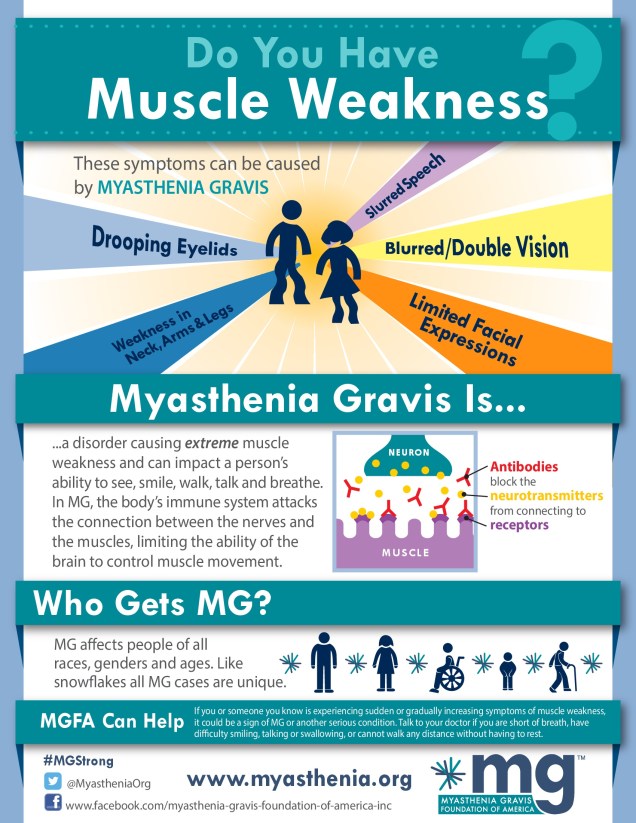Growing up, I was always pretty healthy. That all changed in my early twenties after having my two children. I spent nearly six terrifying weeks with unexplained symptoms. I was living at the children’s hospital following my second son’s birth in 2013 when I finally received the answers. That day, part of me died. You can read more about the roller coaster ride of finally being diagnosed with Myasthenia Gravis and what that meant, here and my journey with Myasthenia Gravis here.
Myasthenia Gravis is a type of muscle disease and most common form of MG is a chronic autoimmune neuromuscular disorder that is characterized by fluctuating weakness of the voluntary muscle groups.
It basically affects my muscle strength every single day. The more I use them, the weaker they become. I’m on a regime of medications, but even they come with detrimental side effects.
Common symptoms can include:
- A drooping eyelid
- Blurred or double vision
- Slurred speech
- Difficulty chewing and swallowing
- Weakness in the arms and legs
- Chronic muscle fatigue
- Difficulty breathing

One thing I’m sure of though, it could always be worse. My symptoms are managed fairly well if I take my meds correctly and I follow up with my doctor every three to six months.
- Acetylcholine Receptor Antibody— a blood test for the abnormal antibodies can be performed to see if they are present. Approximately 85% of MG patients have this antibody and, when detected with an elevated concentration the AChR antibody test is strongly indicative of MG.
- Anti-MuSK Antibody testing—-a blood test for the remaining 15% of MG patients who have tested negative for the acetylcholine antibody. These patients have seronegative (SN) MG. About 40% of patients with SNMG test positive for the anti-
MuSK antibody. The remaining patients have unidentified antibodies causing their MG.
- Office Tests—Sleep, Ice Pack and Edrophonium tests are examinations performed by specialists to evaluate an improvement in strength that may be consistent with MG.
- Electromyography— (EMG) studies can provide support for the diagnosis of MG when characteristic patterns are present. Repetitive Nerve Stimulation is used to check for a pattern of response that is characteristic of MG.
- Single Fiber EMG— studies can provide support for the diagnosis of MG when characteristic patterns are present. The single fiber EMG and AChR antibody test are primary tests used to confirm a clinical diagnosis of MG.
If you are looking for more information on Myasthenia Gravis you can check out this Q&A.
